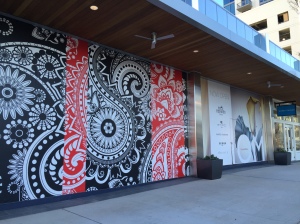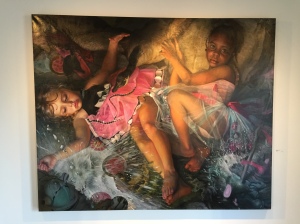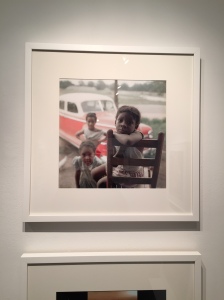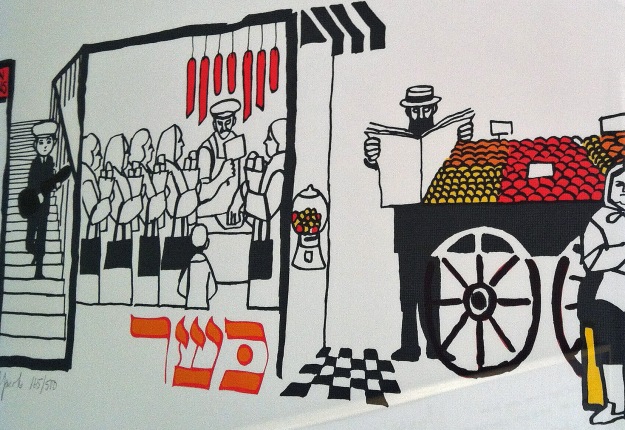Wandering with wandering eyes brought us some fine amusements and nourishing reflections recently.
Marco Razo’s work at the Decatur branch library is worth pondering. The brush work suggests long experience, while the paintings’ forms seem to limit themselves to rudimentary symbolism.
Across the street from the library, Georgia Perimeter College’s 2-D design class is carrying out a participatory project consisting of two large chalkboards with writing prompts. See more at decaturseedthoughts.tumblr.com. Magnet for floating thoughts.
Up in Buckhead, the relatively new Buckhead Atlanta development offers pleasing locations for selfies. Significant facade yardage is given to tasteful if unchallenging art. But then, you’re probably not there to be challenged except in your personal finance.
A pop-up gallery at Peachtree Road and East Paces Ferry looked promising but was closed temporarily, or perhaps they were “pop-down.” If the website is still up, you might see something useful at starkartpopupgallery.com. We could only peer through the glass door.
At the Alan Avery Gallery, Margaret Bowland’s oil paintings were exquisite and challenging. Her pictures of African American girls explore problems of human aesthetics, race, and the construction of identity. High-quality representational technique! On Bowland’s website she says, “I believe in that space—outside the golden circle inhabited by the princess.” We wish Bowland had stayed in the South.
The Bowland experience was heightened by our visit to Jackson Fine Art, with its preview of Gordon Parks’ photographs. Parks’ works are intimate, loving, unflinching, and therefore capture all sorts of dynamic beauties and contradictions.
We in these parts still have a lot of healing to do. Bless the healing image-makers and those who allow us to appreciate them in this place.










